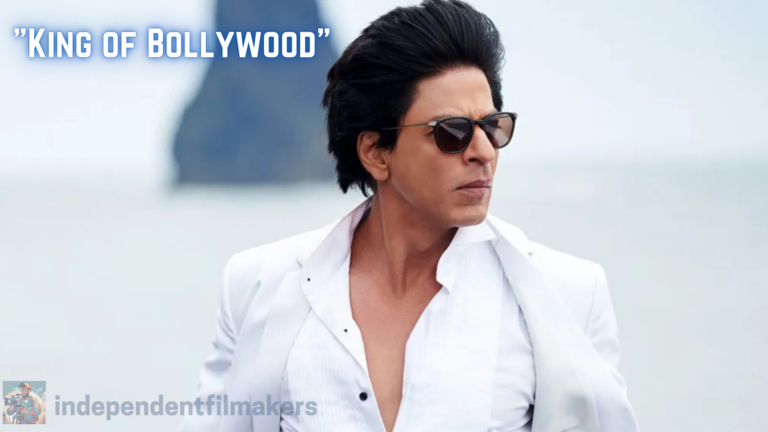Let’s begin this review by addressing a fundamental question: Is the FX30 (or the FX3, for that matter) truly a cinema camera? What criteria define a cinema camera? As video capabilities of mirrorless cameras advance, the distinction between video and hybrid cameras becomes increasingly blurred

In my view, “cinema cameras” are defined by features such as built-in ND filters, internal raw recording capabilities, shutter angle control, SDI ports, dedicated timecode ports, high-quality internal audio preamps, advanced exposure monitoring tools like waveforms and false color, and a comprehensive range of recording codecs to accommodate various scenarios. However, as production becomes achievable with smaller crews, many cameras with more limited capabilities are often more than sufficient in capable hands. During my experience with the FX30, it demonstrated itself as a highly versatile tool and offered excellent value for the investment.

My fascination with the FX30 initially stemmed from my curiosity about the next model up in Sony’s cinema line, the FX3. Having previously filmed a short with the Sony a7S III and appreciating the experience, I was intrigued by the FX3, essentially an a7S III in a more video-centric form factor, with a few enhancements. While I haven’t had the opportunity to shoot with an FX3 yet, the announcement of the FX30, essentially an FX3 with a crop sensor and priced under $2,000 (precisely $1,798), piqued my interest, prompting me to explore further.
While some reviews may criticize the FX30’s smaller sensor, the reality is that filmmakers have been utilizing “crop” sensors in major films for years. Full-frame video is a relatively recent development in the market. Therefore, it would be incorrect to assume that not having a full-frame video camera impedes fantastic storytelling. In fact, it can be advantageous, as it grants access to a vast legacy of superb cinema lenses designed for crop sensors, while also reducing costs and weight with lighter and more affordable glass.
The second aspect that caught my attention regarding the FX30 was its integrated cage. This feature distinguishes it (and the FX30) from Sony’s non-cinema cameras in terms of appearance. The camera is designed to be cageless, with several screw mounts distributed across the body for attaching accessories.
On paper, this seemed like an excellent concept. However, I must admit that it proved to be more challenging than I anticipated. While the mounting points were well-placed, the system is evidently tailored towards users deeply entrenched in the Sony ecosystem. As someone who doesn’t primarily use Sony equipment and lacks all the Sony accessories, I found myself restricted when attempting to utilize many of the generic accessories that I commonly use with other brands.
For instance, the holes on the top of the camera were convenient, but their alignment with the hotshoe made it problematic to attach a NATO rail without obstructing the hotshoe. Therefore, if I wished to affix a NATO handle to the top instead of the Sony-branded handle, I would lose access to the hotshoe. While this isn’t a major issue, I simply wish there was slightly better spacing or depth on top of the camera to accommodate both accessories simultaneously.

Similarly, at the bottom of the camera, I found it puzzling why they opted to include only one screw instead of two, or at least a locating pin, for a cinema camera. If you’ve ever experienced the frustration of mounting your video camera on a tripod or gimbal with just one mounting point and discovered that it continuously rotates at the most inconvenient times, you’ll understand my concern.
Granted, incorporating both a bottom mounting point and additional space beside the hotshoe would have required the camera to be thicker from front to back. However, considering the camera’s compact size, I don’t believe adding an extra half-inch would have posed significant issues. As it stands, I believe a cage for this cageless camera remains essential.
Regarding the camera’s size, I view this as a notable strength. Typically, I’m not particularly drawn to smaller cameras. While I appreciate the concept in theory, I often find myself wishing for something with a bit more substantial build when I actually hold a compact camera in my hand. However, the FX30’s compact size offers significant advantages, particularly for filming discreetly.
Whether you’re working on a documentary where you need to blend into the background, vlogging without attracting attention, or capturing quick shots in restricted locations, this camera’s small size allows for inconspicuous maneuvering, making it an excellent choice for such scenarios.
In the previous paragraph, I mentioned vlogging. Purchasing a cinema camera solely for vlogging may seem like overkill at first glance. However, while using the camera, I observed several features that make it well-suited for this type of content creation environment. It is remarkably user-friendly, inspiring you to simply grab it, power it on, and start filming.
While this may not seem like a significant aspect, the ability to achieve excellent results with minimal effort is crucial for content creators. While it’s true that you can accomplish this with less expensive cameras, I found the FX30 to be particularly enjoyable to use, making it the ideal choice for such situations. Especially when paired with a lens like the E 10-20mm f/4 PZ G, I found this system incredibly quick to operate. With multiple cameras at my disposal, this was the one I reached for first in this scenario.
A key factor that enhances the camera’s usability is the Cine EI function. In essence, when switching to this mode, the camera exclusively operates at its two base ISO settings: 800 and 2,500. Consequently, it consistently captures footage at ISO levels that offer optimal dynamic range. While this may appear restrictive at first glance, it’s important to note that using Cine EI is optional, and users are free to adjust ISO settings in the conventional manner, similar to other cameras. Personally, I find this restriction to be liberating.
Having grown accustomed to shooting on film, I’m familiar with the concept of a fixed film speed (ASA) in the camera, requiring adjustments in other areas to achieve proper exposure. By presenting users with essentially high and low ISO options, Cine EI simplifies choices and minimizes distractions. This allows me to focus on other creative aspects of the shot, knowing that I’m maximizing the sensor’s dynamic range.

I was thoroughly impressed with the image quality. The camera’s 26.1-megapixel sensor effectively downscales 6K footage to produce a crisp 4K image. Straight from the camera, the video required minimal grading. While I conducted some adjustments to test the system, during my experience with it, I discovered little necessity for extensive image manipulation beyond basic Rec709 conversion.
I was thoroughly impressed with the image quality. The camera’s 26.1-megapixel sensor effectively downscales 6K footage to produce a crisp 4K image. Straight from the camera, the video required minimal grading. While I conducted some adjustments to test the system, during my experience with it, I discovered little necessity for extensive image manipulation beyond basic Rec709 conversion.
I do lament the absence of internal raw recording in the camera. While I understand that this feature is not typical in Sony cameras, transitioning from the Z9, where I frequently shoot raw video, and other larger systems utilizing formats like ARRIRAW, it’s a convenience that I’ve become accustomed to. Granted, shooting raw is optional, but it’s a capability I wish the camera offered.
I also desire that the camera featured shutter angle control. It’s puzzling to me why so few mirrorless-style cameras provide shutter angle adjustment instead of shutter speed. It appears to be a feature that could potentially be addressed through firmware updates, although I lack the technical expertise to confirm this definitively. Nonetheless, considering this camera belongs to the “cinema line,” it seems logical for shutter angle control to be included as a standard feature.
I appreciate that the camera offers a focus breathing compensation option. This function essentially zooms in further on your video to compensate for any focus breathing in the lens. It’s a valuable feature, although ideally, I would prefer lenses that don’t exhibit focus breathing in the first place, eliminating the need for additional cropping on an already cropped sensor.
Personally, I would prefer the inclusion of a viewfinder. While I understand that most users will utilize the LCD screen, I sometimes find LCDs difficult to see on particularly sunny days. Therefore, having the option of a viewfinder, even if it’s not always utilized, would be preferable to me. Of course, this issue can be resolved with an external viewfinder or a high-quality monitor, but this would add bulk to the compact system.
I would also favor having built-in ND filters instead of IBIS. From my understanding, it’s challenging to integrate both features into the same camera body, particularly considering the size constraints of a camera like the FX30. However, having both shutter angle control and built-in ND filters would enhance the camera’s ease of use, building upon the advantages provided by its compact size and CineEI functionality.
Nevertheless, it’s important to acknowledge that the FX30 is the entry-level camera in the cinema line, as evidenced by its price point. Therefore, it’s understandable that it may not offer the same level of features as the Sony Venice, for instance. However, what the FX30 does provide is exceptional value for the money. Priced at $1,798, it’s entirely feasible to acquire multiple FX30 cameras for a small production company.
Having multiple cameras can often be more advantageous than having higher-end features on certain productions. Since the FX30 includes the majority of shooting modes and color spaces found in larger Sony cinema cameras, footage from the FX30 should seamlessly integrate into the workflow of Sony shooters using other cameras in the system. The camera is more than capable of serving as a B camera or a gimbal camera to complement your production. Alternatively, for filmmakers on a tight budget, the camera offers all the necessary tools to complete a production independently at a significantly lower cost.

The camera does have several drawbacks, but its greatest strength lies in its exceptional value for the price, particularly for those already invested in the Sony ecosystem. However, on the subject of value, I would like to address a concern. This concern is not solely directed at Sony but extends to many recent tech releases. When did it become acceptable for companies to discontinue supplying separate battery chargers with their products? While the camera charges via USB and includes a cord, this means that I must connect the camera itself to the wall every time I need to charge it.
If I’m on a production and need to charge batteries on the side as I work, I find myself at a disadvantage. Sure, I can pre-charge multiple batteries in the camera the night before, but what if I forget? What if I’ve been using the camera the day before and didn’t have time to dedicate it to charging? I could opt to purchase a separate Sony charger, but even for a camera priced at only $1,798, it doesn’t seem unreasonable to include a standalone battery charger in the box.
Let’s move on to the pros and cons.
Pros:
1. Compact size enhances portability and discreetness.
2. Despite its smaller sensor, the camera’s performance surpasses expectations. Notably, many feature films have been shot on “crop” sensors, resulting in lower lens rental costs.
3. Exceptional image quality considering its price point.
4. Power zoom lenses contribute to efficiency in operation.
5. Feature for focus breathing compensation.
6. Utilization of downsampled 6K resolution.
7. Full HDMI support.
8. Unique color-coded focusing system adds a distinctive touch.
9. Cine EI mode available.
10. Among Sony’s mirrorless-style cameras, it boasts the best video ergonomics.
Cons:
1. Absence of in-camera raw capabilities.
2. Lack of built-in ND filters.
3. The “built-in” cage may necessitate an external cage in certain scenarios.
4. Absence of a standalone battery charger in the package is disappointing.
5. Internal waveform or false color functionalities are missing.
6. No provision for adjusting shutter angle.
7. Lack of a viewfinder.
Who Would Benefit from This Camera?
1. Serious content creators seeking quality on a budget.
2. Independent filmmakers looking for cost-effective solutions.
3. Owners of the FX9, FX6, or FX3 cameras seeking a compatible B or C camera.

















